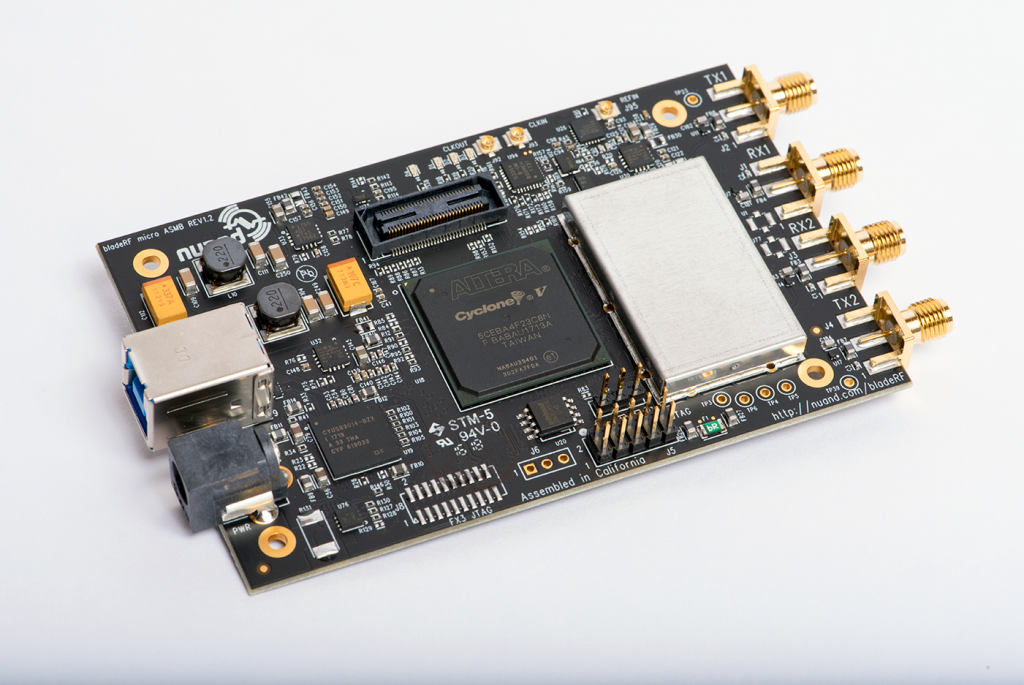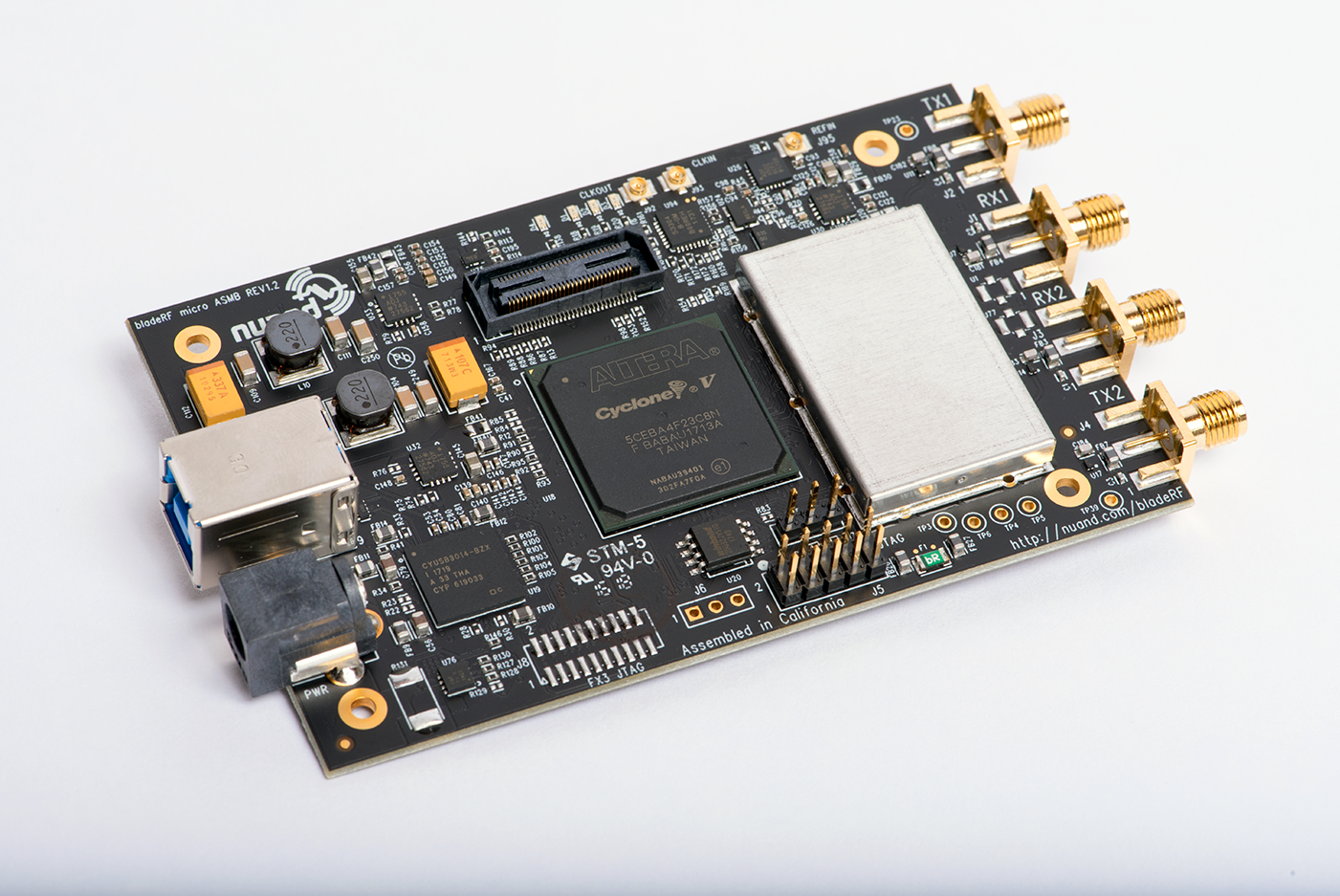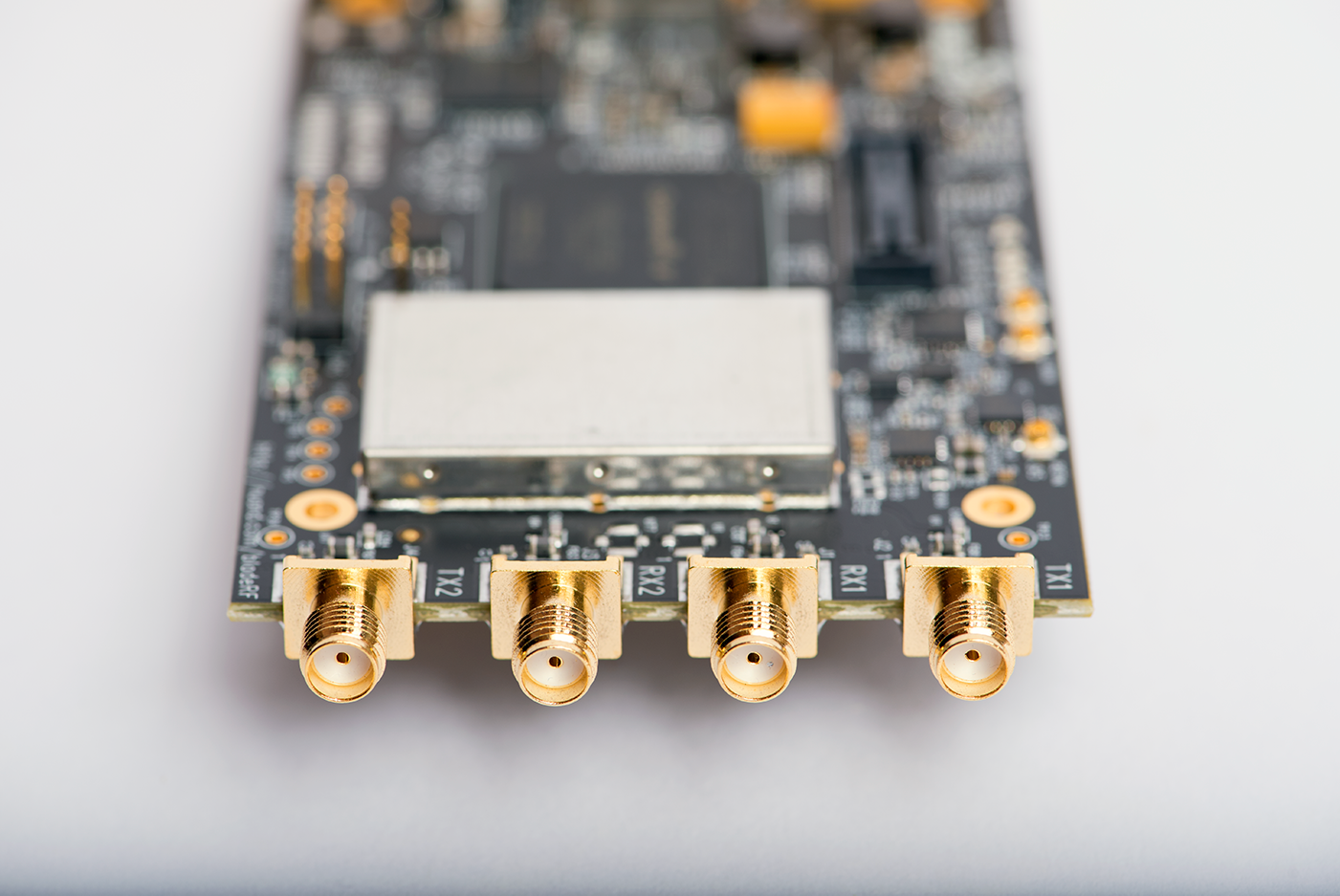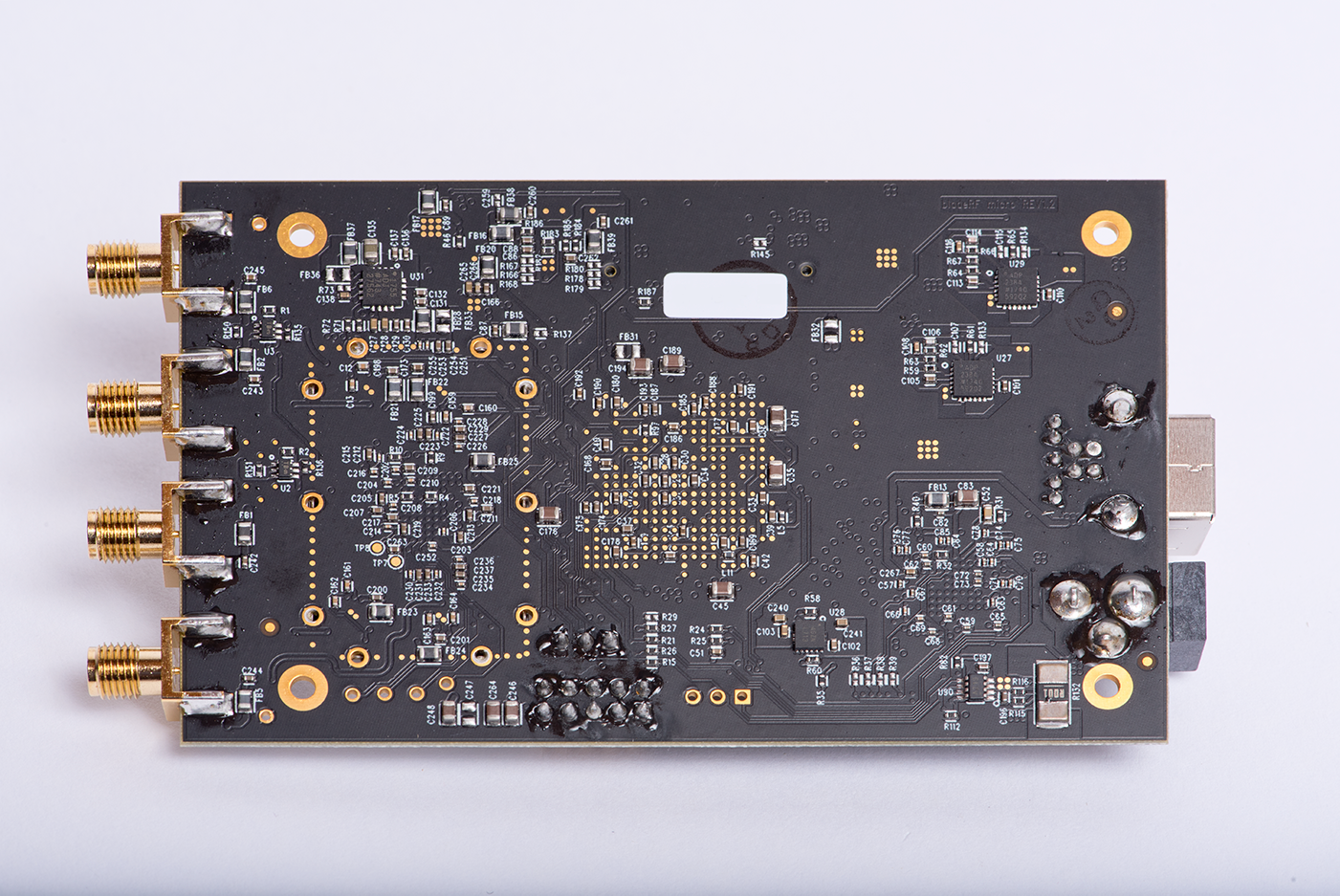bladeRF 2.0 micro


The bladeRF 2.0 micro is the next-generation 2x2 MIMO, 47MHz to 6GHz frequency range, off-the-shelf USB 3.0 Software Defined Radio (SDR) that is easy and affordable for students and RF enthusiasts to explore wireless communications, yet provides a powerful waveform development platform expected by industry professionals.
Support is available for Linux, macOS, and Windows. The bladeRF libraries, utilities, firmware, and platform HDL are released under open source licenses, and schematics are available online. The FPGA and USB 3.0 peripheral controller are programmable using vendor-supplied tools and SDKs that are available online, free of charge.


The bladeRF 2.0 micro features support for: GNU Radio via gr-osmosdr, Pothos via SoapySDR, SDRange, SDR Console, SDR # via sdrsharp-bladeRF, MathWorks MATLAB® & Simulink® via libbladeRF bindings.



| RF Specifications | Min | Typ | Max | Unit |
|---|---|---|---|---|
| ADC/DAC Sample Rate | 0.521 | 61.44 | MSPS | |
| ADC/DAC Resolution | 12 | bits | ||
| RF Tuning Range (RX) | 70 | 6000 | MHZ | |
| RF Tuning Range (TX) | 47 | 6000 | MHz | |
| RF Bandwidth Filter | <0.2 | 56 | MHz | |
| CW Output Power | +8 | dBm |
| FPGA Specifications | Min | Typ | Max | Unit |
|---|---|---|---|---|
| Logic Elements | 49 (xA4) | 301 (xA9) | kLE | |
| Memory | 3,383 (xA4) | 13,917 (xA9) | kbits | |
| Variable-precision DSP blocks | 66 | 342 | ||
| Embedded 18x18 Multipliers | 132 | 684 |
| Physical Dimensions | Min | Typ | Max | Unit |
|---|---|---|---|---|
| Dimensions | 6.3 x 10.2 x 1.8 | cm | ||
| 2.5 x 4.0 x 0.70 | inches | |||
| Weight | 90 (0.2) | grams (lb) | ||
| Operating Temperature | 0 | 70 | °C |
bladeRF 2.0 micro xA4, 47MHz to 6GHz frequency range, 61.44MHz sampling rate, 2×2 MIMO channels USB 3.0 SuperSpeed Software Defined Radio.
bladeRF 2.0 micro xA9, 47MHz to 6GHz frequency range, 61.44MHz sampling rate, 2×2 MIMO channels USB 3.0 SuperSpeed Software Defined Radio. The xA9 features the largest-in-class 301KLE Cyclone V FPGA, an essential component for hardware accelerators and HDL signal processing chains including FFTs, Turbo Decoders, transmit modulators/filters, and receive acquisition correlators for burst modems. The xA9’s 301KLE FPGA has vastly more room available in the FPGA than the xA4 for these sorts of applications. The bladeRF does not ship nor come with these (or any) accelerators or processing chains, they are entirely up to the end-customer to design or procure from other 3rd party suppliers.
Bias-tee powered Power Amplifier (TX) for the bladeRF 2.0 micro
Bias-tee powered Low Noise Amplifier (RX) for the bladeRF 2.0 micro